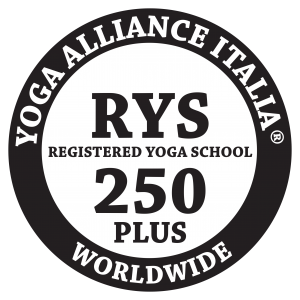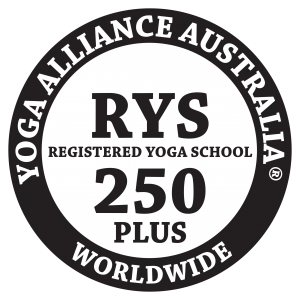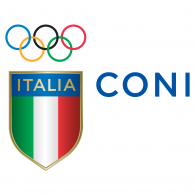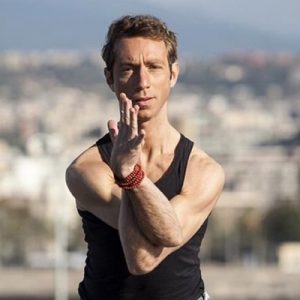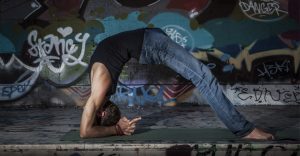Yoga Alliance® – Australia and Yoga Alliance® Italia Yoga Industry leaders Introduced New Standards for Yoga Training
As the popularity of yoga in the world grows each year, so does the need for more rigorous yoga teacher training programs. That is why Yoga Alliance® International/Australia and Yoga Alliance®-Italia/International (sister organisations) believe that yoga teachers and training providers deserve a better support system in comparison to what they have had in the past. Let’s see how…
In 1987 the International Yoga Federation (IYF), the largest yoga organisation in the world, under the honorary Presidency of Indra Devi (a.k.a.The First Lady of Yoga) created standards to celebrate yoga teachings of all traditions and the diversity, harmony and integrity of yoga practices all over the world
The IYF implemented three yoga teacher training systems:
1) The Indian Traditional Gurukula System.
2) The American System or Standards by hours.
3) The European System by Programme and years.
Since 2000, the most significant independent world’s renowned Yoga Alliance organisations (Australia/Italy/International/Canada/UK-Professionals/USA) the yoga community’s primary advocacy organisations and Register of certified yoga schools and teachers, have adopted standards for teacher training by hours. The most commonly used and widely accepted 200-hour YTT international standard was created in 2001 to set forth the minimum hours required to become a yoga teacher anywhere in the world.
In January 2017, the Yoga Alliance® International/Australia and its sister organisation Yoga Alliance® International/Italia’s Educational Standards Committee (ESC) assembled a diverse range of experts within the yoga industry for a comprehensive review of the existing yoga teaching standards (most standards are voluntary in the sense that they are offered for adoption by people or industry without being mandated in law) supported by both organisations. The decision was based on the proliferation of low quality yoga teacher training, inadequately trained yoga teachers and unscrupulous providers who deliver substandard training,
The two organisations felt that their existing standards were out of date and restrictive in their breakdown of course content and hours. Rather than requiring a specified narrow curriculum, the ESC decided that keeping the bar high for training programs content, structure, the number of contact hours a program should incorporate, the experience of the teaching faculty, the course entry prerequisites and online learning, within a reasonable period of time would increase acceptance and integration of yoga teachers within the industry.
After exploring a variety of existing credentialing models, the ESC proposed to improve the foundation of the existing credentialing system by raising the Standards of Practice and level of professionalism of credentialed yoga teachers and yoga schools and thus provide consumers with independent assurance that yoga professionals who hold Yoga Alliance Credential possess the knowledge, skill, or ability to practice their occupation competently.
Meaningful Standards for Yoga Teaching from Australia to Europe to China
In April 2017, after receiving input from member schools, world renowned yoga experts and experienced yoga teachers, Yoga Alliance® International/Australia added to its existing credentialing system the 250-PLUS and 500-PLUS hours standards both designed to elevate the profession of yoga teachers a title that has no legal force as there are no legal requirements for yoga teachers and there is no statutory legislation specifically governing the teaching of yoga anywhere in the world.
While the 200-hour widely adhered-to standard is a relatively new concept,Yoga Alliance®-International/Australia and Yoga Alliance®-Italia/International believes that 200 hours is just not enough to teach yoga. Besides, it has become a point of contention within and outside the yoga community.
Although some experts may agree that the 200-hour model is more accessible for aspiring yogis, more studios and experienced teachers welcome the 250 PLUS and the advanced 500 PLUS hour standards instead. The “PLUS” standard enables training providers to incorporate more hours of study, practice and teaching methodologies into their programs so aspiring teachers can go more in depth into the study and teaching of yoga to prepare themselves to teach beginning and intermediate yoga classes.
On September 1st 2017, Yoga Alliance® ItaIia/International signed a “Partnership Agreement” with the C.S.E.N (Italy’s largest National Educational Sport Organisation) and its sister organisation Benessere C.S.E.N to implement the “PLUS” standards in Italy. The C.S.E.N is recognised by the Italian National Olympic Committee C.O.N.I and by the Italian Paralympic Committee C.I.P.
The C.SE.N aims to promote and disseminate sporting activities with high social value, to establish favourable conditions for a wider development of physical education, sports and health as well as cooperating with autonomous organisations from other countries.
In 2015 as part of the organisation restructure, the C.S.E.N established the National Holistic Sector Benessere C.S.E.N www.benesserecsen.it a body engaged in the drafting of national guidelines and reference standards for the training of holistic operators and yoga teachers, defining training courses curriculum and minimum hours. With yoga been practised by more than two million people in Italy, the Benessere C.S.E.N has become Italy’s largest Register of Yoga Teacher and schools.
The agreement between the C.S.E.N and Yoga Alliance® ItaIia/International has given rise to a series of initiatives aimed at improving many aspects in the international and national Yoga industry. Among the first actions taken was the need of the C.S.E.N to equalise the training standards of the Yoga sector in Italy to the international ones.
Following the important decision by both organisations to raise the minimum training standards from the basic 200 to 250 and 500 PLUS hours,as of September 1st 2017, Italy is the first European country and the second in the world after Australia to have implemented new standards for yoga training courses. Upcoming projects and ongoing initiatives see the two organisations acting in constant and harmonious symbiosis.
Yoga Industry Innovators
Yoga Alliance®-International/Australia and Yoga Alliance®-Italia/International were the first Alliance organisations to understand the importance and need for innovation. Bringing innovation meant being open to new ideas and being able to adapt to change.
Offering new credentials such as: RYS 250 PLUS/350 and 500 PLUS hours and new meaningful standards to those who meet the requirements of the standards means that a registered yoga teacher has met certain criteria and has made a commitment to becoming a safe and qualified teacher.
